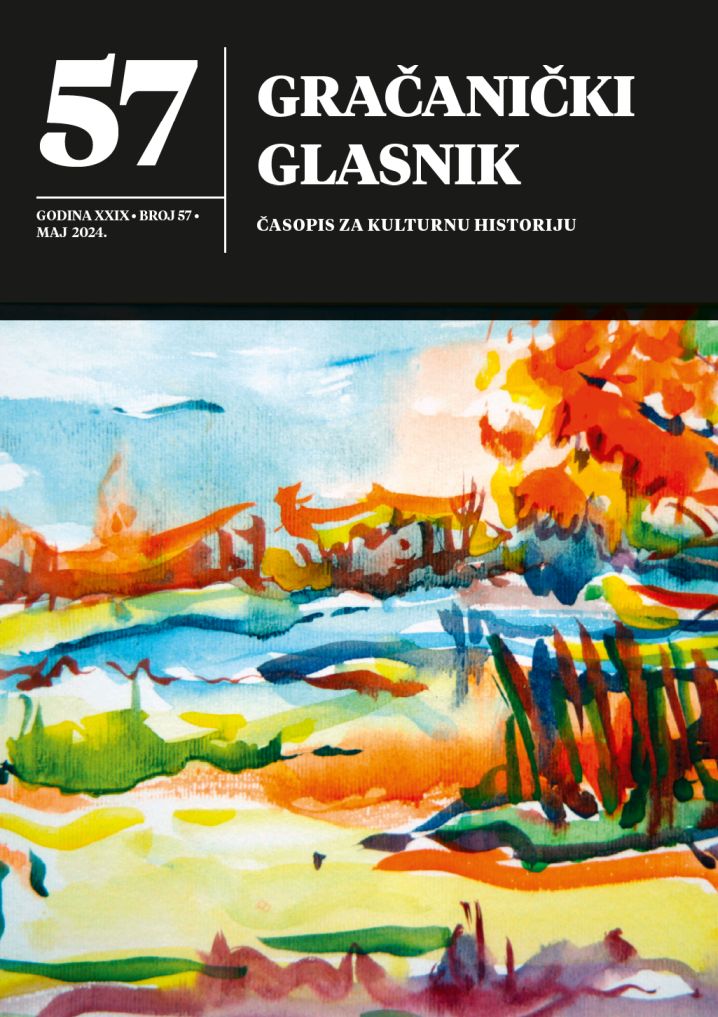Od socijalističkog do privatizovanog preduzeća–primjer gračaničke Štamparije (iz neobjavljene knjige “Gračanica od posla čaršija”)
From a socialist to a privatized company - the example of the Gračanica Printing House (from the unpublished book "Gračanica od posla čaršija")
Author(s): Omer HamzićSubject(s): History, Social history, Post-War period (1950 - 1989), Transformation Period (1990 - 2010)
Published by: Izdavačka kuća »Monos« d.o.o
Keywords: Printing house Gracanica; "Grin"; socialism; production; workers' council; graphic activity; paper packaging;
Summary/Abstract: The Gračanica printing house was founded by the People’s Committee of the municipality of Gračanica on the 20th of September 1958, as a state owned socialist enterprise. It was provided some office space which was owned by another failed socialist enterprise, and was provided with some funds to pay for the equipment purchased from the Zagreb Company “Singer”, due to the fact that it was more profitable for them to sell the equipment than to give them to a technical museum. All of this fit well into the environment of a neglected Bosnian province town, such as Gračanica was (no asphalt, no telephone, no water supply, no high school), and its equally neglected economy which was reduced to a few poorly equipped and unprofitable craft workshops of which some were about to be liquidated. Starting a graphic business in such an unfavorable environment was, no doubt, a big challenge for the few people who got into it and maintained it in the initial period more with enthusiasm and “volunteer work”, rather than with real profitability. At the very start the Printing house was kept afloat thanks to its integration with the newspaper and publishing company “Zadrugar” from Sarajevo, a much stronger printing house, which in the period from 1960 to 1964 kept the Gračanica graphic designers in business. After leaving “Zadrugar”, having overcome the initial difficulties, the Printing house continued operating during a stormy period, which some called the mature phase of the Yugoslav socialist self-governing system or humane socialism – as such the Printing house will survive the collapse of this system in the 1990s. Operating in the conditions of a specific market and market relations, which had the characteristics of a more or less directed or agreed upon economy, and due to the nature of its activity as well as the location between two strong printing houses – in Doboj and Tuzla, the printing house from Gračanica felt the effect of such a marker and the competition very early. Due to these facts the printing house was forced to look for rational organizational and technological models in order to survive on the market, and at the same time the company survived numerous reforms dictated by powerful factors outside the company. The workers and managers of this company have shown the power to adapt to any and all conditions since its foundation. They successfully overcame the period of economic and social reform (1964 and 1965), survived the amendments to the constitution in 1971, left behind the famous Law on Joint Labor in 1975, and survived the local labor organization “Trgoprodukt” operating as a part of it since 1976 to 1990, successfully started Marković’s privatization, to finally survive the 1992 – 1995 war, finally make it to peace time and become a private company five or six years after the war. In the post-war turbulent process of privatization, it was necessary to ensure that operations and the substance of the company were not damaged, as was the case in many cases of privatization corruption and the collapse of companies. It turned out that the rationalization of the ownership structure in terms of a gradual reduction in the number of owners was the best solution to the given circumstances. Thanks to that “Grin” is the only graphical company in Bosnia and Herzegovina that managed to survive the post-war privatization process. Much more significant and powerful companies failed due to intentional or unintentional bad privatizations. Due to these facts “Grin” stands as a positive example of successful privatization in Bosnia and Herzegovina. Six and a half decades of existence was enough for “Grin” to master all the tasks that were known in the past and that are known in the graphic industry today. This company developed the ability to superiorly solve all ideas and unknowns that may come with Customers: from the creation of graphical design and form, to the realization of the entire range of graphic needs, to produce all types of packaging based on paper and cardboard, of a high level of quality and range from food to pharmaceutical industry… Summarizing the overview of the development of the Gračanica printing house, it is necessary to state the following: during the past six and a half decades this company developed in accordance with the overall socio-economic development and social changes in the former socialist Yugoslavia, including the wartime period in Bosnia and Herzegovina (1992 – 1995). Although there were periods of stagnation and hardship in that relatively large period of time, overall, these were years of survival and very successful development. It is important to note that this company never left its core business (Printing), and that it constantly increased the physical volume of production and the number of workers employed in that activity, that it never operated at a loss, not even during the war. The “Grin” printing house nowadays is a modern, well-organized private company with about forty workers, capable of successfully dealing with all the challenges of a new age and the post-war development of Bosnia and Herzegovina. Traditional business, rich experience and good personnel, sophisticated technology and the universality of the production program – with new owners at its helm – that is “Grin” today, a company that has its yesterday, it’s today and its tomorrow.
Journal: Gračanički glasnik - Časopis za kulturnu historiju
- Issue Year: 2024
- Issue No: 57
- Page Range: 61-148
- Page Count: 88
- Language: Bosnian

